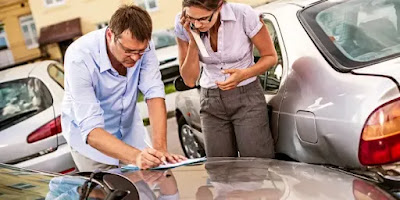Understanding the Mechanics of Car Accident Insurance: A Comprehensive Guide
Introduction
Car accidents are an unfortunate reality of modern life, and while we all hope to avoid them, it's crucial to understand how car accident insurance works to protect ourselves and our assets. Insurance provides a financial safety net in the event of an accident, covering damages and medical expenses. In this comprehensive guide, we will delve into the intricacies of car accident insurance, exploring the different types of coverage, the claims process, and tips for maximizing your protection.
Types of Car Insurance Coverage
1. Liability Insurance
Liability insurance is a fundamental component of car insurance that covers the cost of property damage and bodily injury that you may cause to others in an accident. Usually, it covers both property damage responsibility and bodily harm liability. The minimum coverage requirements vary by state, but it's advisable to carry coverage beyond the minimum to ensure adequate protection.
2. Collision Coverage
Collision coverage is designed to pay for the repair or replacement of your vehicle if it's damaged in a collision, regardless of who is at fault. This coverage is particularly important for newer or more valuable vehicles, as it safeguards your investment.
3. Comprehensive Coverage
Comprehensive coverage guards against non-collision occurrences such animal collisions, theft, vandalism, and natural calamities.. While not required by law, comprehensive coverage is crucial for safeguarding your vehicle from a wide range of potential risks.
4. Uninsured/Underinsured Motorist Coverage
This type of coverage steps in when you're involved in an accident with a driver who either has no insurance or insufficient coverage to pay for the damages. Uninsured/underinsured motorist coverage can also extend to cover injuries sustained in a hit-and-run accident.
5. Medical Payments Coverage
Medical payments coverage, also known as MedPay, covers the medical expenses for you and your passengers regardless of who is at fault. It is particularly valuable in states with no-fault insurance systems.
The Claims Process
1. Report the Accident
The first thing you should do after an automobile accident is notify your insurance provider. Provide all the necessary details, including the date, time, location, and a description of the events leading up to the accident.
2. Document the Scene
Take photos of the accident scene, damages to vehicles, and any visible injuries. Collect information from the other parties involved, including names, contact details, insurance information, and eyewitness accounts if possible.
3. Seek Medical Attention
If you or your passengers are injured, seek medical attention promptly. Document all medical treatments, expenses, and keep records of any diagnoses or prognoses.
4. File a Claim
Once you've gathered all necessary information, contact your insurance company to file a claim. Provide them with the details of the accident, supporting documentation, and any relevant information requested.
5. Insurance Adjuster Evaluation
An insurance adjuster will assess the damages and injuries, determining the coverage applicable to your policy. They may inspect the vehicles involved and review medical records to evaluate the extent of the damages.
6. Claim Settlement
After the assessment, your insurance company will offer a settlement based on the coverage and the circumstances of the accident. It's essential to review the offer carefully and, if necessary, negotiate with the adjuster to ensure a fair settlement.
Tips for Maximizing Insurance Protection
1. Understand Your Policy
Familiarize yourself with the details of your insurance policy, including coverage limits, deductibles, and exclusions. Knowing what is covered and what is not can help you make informed decisions.
2. Regularly Review and Update Your Policy
As circumstances change, such as acquiring a new vehicle or experiencing life events like marriage or the birth of a child, it's crucial to review and update your insurance policy accordingly. Make sure the coverage you have meets your demands as of late.
3. Bundle Your Policies
Bundling multiple policies, including home and auto insurance, can result in discounts from many insurance companies. Significant cost reductions can result from combining policies.
4. Maintain a Good Driving Record
Safe driving not only keeps you and others on the road safe but also helps you maintain a favorable insurance premium. A clean driving record often results in lower insurance rates.
5. Shop Around for the Best Rates
Insurance premiums can vary significantly among different providers. Regularly shop around for the best rates and coverage options to ensure you are getting the most value for your money.
Conclusion
Understanding how car accident insurance works is essential for every driver. With the right coverage in place, you can navigate the aftermath of an accident with confidence, knowing that your insurance is there to provide the necessary financial protection. By familiarizing yourself with the types of coverage, the claims process, and tips for maximizing your protection, you empower yourself to make informed decisions and secure your financial well-being on the road.

